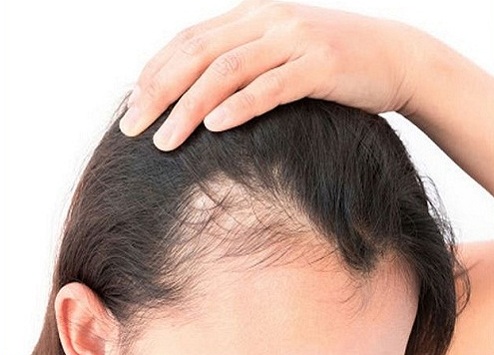
Causes
Female Pattern Baldness can occur due to the following reasons:
• Autoimmune disease
• Hair loss can develop after a significant illness, such as a severe infection, high fever, or surgery.
• Medications such as antidepressants, thyroid medications, and chemotherapy cancer drugs can cause hair loss and the hair usually takes nearly a year to regrow.
• More frequent/regular use of potentially damaging chemical treatments (perming, bleaching and straightening) and hairstyling devices like curling tongs, hairdryers and hair straighteners.
• Hormonal imbalances, like thyroid disorders or menopause-related hormonal changes, and nutritional deficiencies especially iron.
• Contraceptive use: Hair loss may occur if you use oral contraceptives and are prone to hormone-related hair loss or are oversensitive to hormonal body changes.
Treatment
• Minoxidil: The doctor might prescribe the application of minoxidil to the scalp every day. It might not help in fully restoring the lost hair but it can grow back a significant amount of hair and give it an overall thicker appearance.
• Spironolactone is a diuretic, which is used to remove the excess fluid from the body. It also blocks androgen production and might help female patients regrow their hair.
• If low iron is the reason for hair loss then the doctor might prescribe an iron supplement and other supplements, such as biotin and folic acid for thick hair.
• Laser treatment is also used to stimulate hair regrowth.
• Wearing a wig will help in concealing the baldness.
• Platelet rich plasma therapy
• Mesotherapy
• Hair transplant is a more permanent solution.
© theskincentresirsa.com, All Right Reserved.
Designed By Camsol India